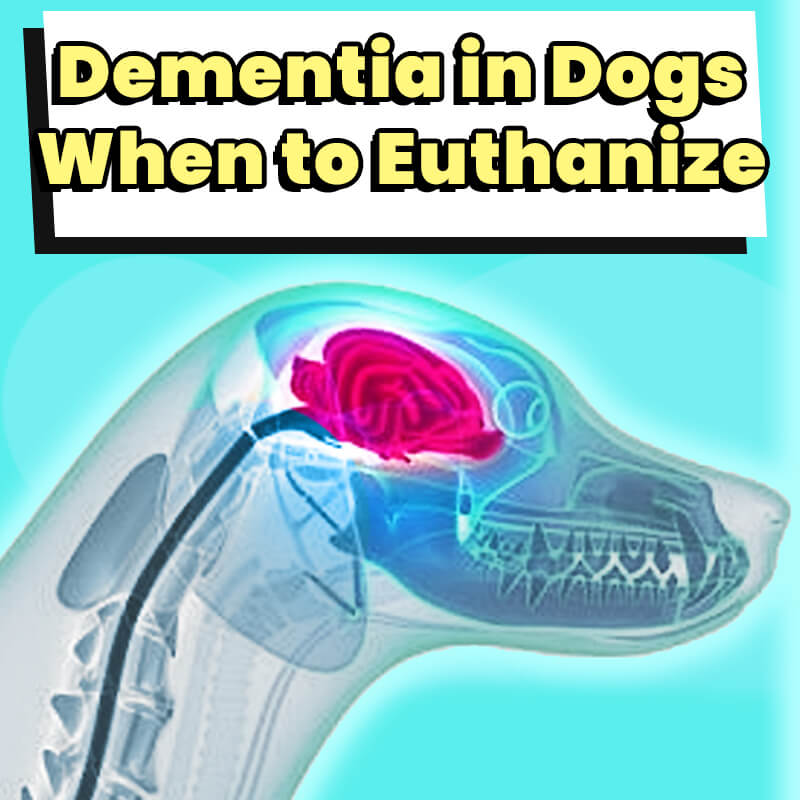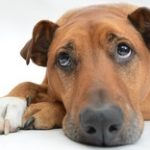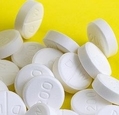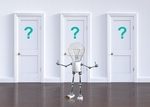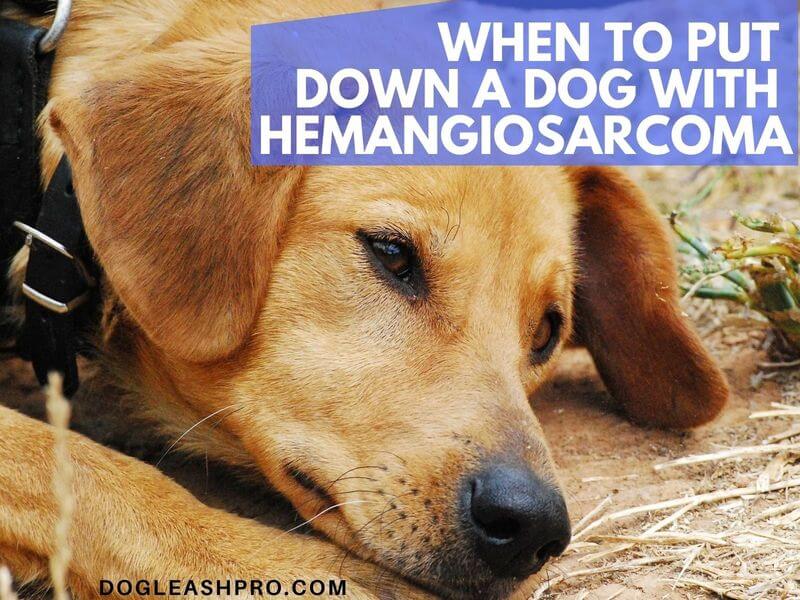
Daisy, a Miniature Goldendoodle, was my aunt’s baby and fur soulmate. My aunt adopted her when she was already nine years old and recalled the many years of joy Daisy brought her. Unfortunately, Daisy had to be euthanised 2 years after her diagnosis. She was 15 years of age.
When to euthanize a dog with dementia? If your dog seems to be rapidly deteriorating (mentally and physically), shows unusual behaviors and overall appears to be having a poor quality of life, consult your vet for professional advice. This could be the right time to consider euthanization or putting them to sleep.
Some of the signs of canine dementia are difficult to notice at first. Some dogs act drunk and wobbly while other dogs walk in circles around their owner.
In this article, I’ll share my aunt’s experience with euthanizing her dog with dementia. Also, I’ll discuss what dementia means for a dog’s quality of life, the right time to put them down, and how long your pup may have left before seriously considering euthanization.
Table of Contents
What is CCD in Dogs?
Dog dementia, also known as Canine Cognitive Dysfunction (CCD) or Canine Cognitive Dysfunction Syndrome (CDS) is a cognitive disorder in dogs with effects like Alzheimer’s in humans. It’s an insidious condition related to the aging of a dog’s brain leading to behavioral changes and loss of comprehension, memory, and learning.
According to Parkside Animal Hospital, 62% of older dogs between 11 to 16 years of age demonstrate one or more signs of CCD or dementia. As the dog grows older, the percentage increases.
Canine dementia occurs when a sticky protein called beta-amyloid accumulates in the front part of the dog’s brain to the point that it produces plaque. The plaques accumulate around the neurons resulting in the nerve cells breaking down. This decreases the number of neurotransmitters. The dead cells are then replaced with spinal fluid.
Subsequently, this process causes pathological changes in the dog’s brain. The front part of the dog’s brain, associated with memory and learning, starts to slow down. Gradually, dogs start to lose their memory and even forget their owners.
With time, the plaques progress to other parts of the brain, leading to spatial disorientation, wandering, and decreased vision and hearing. Your pup may lose control of elimination, leading to house soiling.
Additionally, the degenerative brain disease affects the dog’s physical health and movement. Their motor functions will be reduced.
Dog dementia affects four cognitive forms. They are:
1. Involutive depression
Depression can occur in the dog’s senior year, much like chronic depression in humans. Your dog may feel confined in their home and start to circle or pace around the house. They may become lethargic, have sleep disorders, and start house soiling.
Keep a close eye on your dog during his senior year. Daisy was very vocal at night. She barked out of confusion. My aunt knew Daisy had anxiety and treated it right away.
2. Dysthymia
Your dog may lose her sense of awareness, including the length of her body and size. Daisy had dysthymia. Very frequently, she would get stuck behind my aunt’s furniture or in the corner of her living room.
Daisy wasn’t aware that all she had to do was walk backward so she could come out from behind the furniture. At night, she would also moan. One night, my aunt interrupted her while she was in a dysthymic state and she started to get mad. Thankfully, Daisy didn’t react by biting.
3. Hyper aggressive
Dogs in their senior years may be hyper-aggressive due to the dysfunction in their neurotransmitter serotonin.
Daisy lost her ability to communicate with other dogs at the dog park. She didn’t give appeasing signals to other dogs. Some senior dogs may bite first and warn second. Thankfully, our sweet Daisy never reacted by biting.
4. Confusion syndrome
A profound decline in cognitive ability may lead to confusion syndrome. Daisy didn’t seem to be learning well anymore and forgot who her owner was as well as other human family members around her.
We now know that this was due to the effects of CCD in dogs. When her neurons started to die off due to the beta-amyloid plaques, it affected her brain by interrupting the nerve impulse transmission.
Unfortunately, there is currently no known cause of CCD. We do know that it often occurs in senior dogs, age 9 years and up. It also may occur in dogs with a genetic history of canine dementia. Be sure to speak with your dog’s breeder to find out if your dog’s parents have the disease or ask your vet.
Keep in mind that CCD is different in every dog. Some dogs will have fewer or more symptoms than others. Pet dementia can also accelerate at differing rates and cause different amounts of impairment and discomfort to your pup.
The good news is that the condition can be managed and we will go over several natural treatments below.
Helping you decide when to put a dog down due to dementia?
Contact your dog’s vet if you are worried your pup is suffering due to dementia or CCD. Consult with your vet to make an informed decision about euthanization.
Try not to make any hasty decisions. If your dog’s symptoms are minor in the early stages, euthanization may not be the best option as your pup may still be enjoying life. Seek treatments if they are available for your dog.
To take the stress out of the decision-making and give you peace of mind, seek out qualified professionals and ask for help.
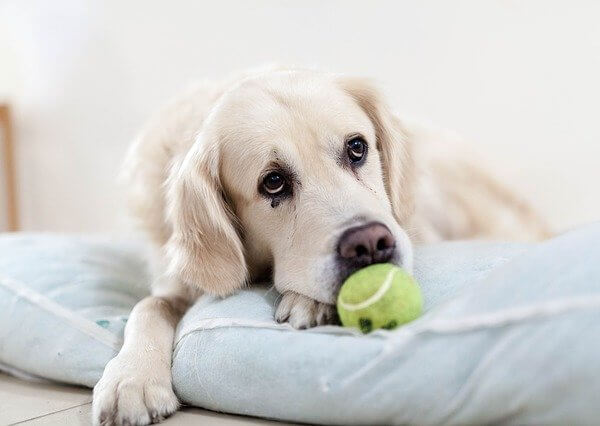
Total Time Needed :
6
Months
30
Minutes
Total Cost:
50
USD – 300+ USD
Required Tools:
Things Needed?
Steps to decide if you should euthanize your dog with dementia:

Signs of Dementia In Dogs

Early diagnosis of CCD in dogs is crucial to maximizing their quality of life. It provides the dog owner with more time for intervention, therapies, and medication to slow down the disease.
There are several signs of canine cognitive dysfunction. Many vets recommend looking out for the following symptoms in conjunction with one another if you have concerns about your dog’s mental and emotional health.
Disorientation
- Repetitive pacing or circling
- Wandering aimlessly
- Acting dazed
- Movements don’t seem purposeful
- Staring at walls for long periods of time
- Looking confused
- Lost behind furniture
- Getting lost in corners
- Attempting to go in a door the wrong way
- Looking lost in the yard
- Forgetting their purpose of going outside
- Seems lost in familiar places
- Unable to figure out the next step
- Failing to recognize familiar people or pets
- Reduce responsiveness to name or verbal commands
- Barking for no reason
- Have trouble getting around the house
- Forgetting where things are: doors, furniture, corners
Not interested in social interaction
A dog with dementia often won’t seek out human companionship. In fact, they will even walk away in the midst of being petted. Don’t be offended when this happens.
- A lack of interest in social interaction (petting, playing, belly rubs, grooming)
- Less enthusiastic to meet and greet people
- No longer greets family members when they arrive home
- No longer recognize family members or other people
- Unresponsive to their owner’s voice
- Not interested in their surroundings
- Decreased response to stimuli
Sleep schedule
- Sleeps less and is restless throughout the night
- Sleep excessively during the day
- Sleeps more than normal during a 24-hour period
Activity level changes
- Reduced daily activity
- Decreased interest in outdoor activity and exercise
- Lack of interest in their surroundings
- Pacing, circling, or restlessness at sunset
- Very vocal at night (barking, whining, crying, howling)
House soiling
- Urinates or defecates inside the house
- Urinates or defecates indoors soon after having been outside
- Failure or forgets to indicate to the owner their need to go outside
- Accidents occurring in front of their owners
Changes in appetite
- Either losing interest in food or always being hungry
- Trouble eating
- Trouble finding food or water dish
Anxiety
- Increased anxiety when separated from their owner
- Reactive or fearful to visual or auditory stimuli
- Increased fear of new places
Memory and learning
- Inability or slow to learn new tasks
- Decreased ability to perform learned tasks
- Decreased responsiveness to familiar cues
Aggressive behavior
- A lower threshold of tolerance and patience leading to aggressive behaviors
- Sudden aggression (growling, biting at people or other pets)
So, what are the Stages of Dementia In Dogs?
There are four (4) stages of dementia in dogs and these are:
Spatial Orientation
This is when a dog begins not to recognize familiar toys and other objects. Plus, dogs begin to wander aimlessly and appear disoriented.
Social Interactions
The dog begins to manifest signs like a change in behavior towards family members, irritability, and reduced social interactions.
Sleep-Wake Cycles
Sleep disturbances in the form of insomnia or lack of sleep or it could be the opposite which is sleeping too much.
House Soiling
This is the stage where the dog would eliminate in inappropriate locations.
Do dogs with dementia stop eating?
Not all dogs with Dementia stop eating. For some of them, the reason why they don’t eat is that they have forgotten where the feeding bowls are located.
Make sure you place the doggy bowl near their bed or near where they rest. The water bowl should always be full of fresh cool water.
Careful observation is key
Make sure to observe your furry pup very closely during their senior years. Note that nighttime restlessness, confusion, and fear may reduce their quality of life.
Patience is key here. The progressive illness will affect your dog’s ability to process what you’re saying. As a result, your pup may not act upon your request. Some dogs may even forget their name when you call out to them.
For Daisy, we observed her picking up new compulsive behaviors such as pacing and being more aggressive than before. She also started to urinate and defecate indoor on my aunt’s carpet.
My aunt knew this wasn’t normal and decided to bring Daisy to the vet. It was important for the vet to rule out medical problems such as urinary tract infection or gastrointestinal problems before assuming the problem was related to dementia.
Sometimes Daisy wasn’t responsive when my aunt called out to her so the vet also checked to rule out hearing loss. It wasn’t due to hearing loss and the vet officially diagnosed Daisy with dementia.
After learning that Daisy’s new unusual behavior was due to CCD, my aunt got her doggie diapers. Here is the one my aunt used. It’s a disposable and washable dog diaper that wraps around your dog’s legs for comfort fit. The diaper is made to fit dogs of all sizes.
Diagnosis
As soon as you notice any unusual behavior, make an appointment with your dog’s veterinarian. If you’ve been tracking your dog’s unusual behaviors and how often they’re occurring, show your journal to the vet. The journal will provide a wealth of information.
Your vet will also go over your dog’s history and perform a complete physical examination to evaluate the overall health status and cognitive functions of your pup. This is also a way for vets to rule out other medical issues before diagnosing your dog with CCD.
The vet will likely do a thorough diagnostic test such as blood tests, ultrasounds, and X-rays to check for other health problems and even use a magnetic resonance imaging (MRI) scan to confirm the diagnosis.
Sometimes tumors, inflammation, and infection in the brain can mimic the symptoms of CCD so it can take time to get a proper diagnosis.
If your vet determines that your dog has dementia, she will discuss the various options with you, including prescribing appropriate medications, supplements, and treatment plans that could be helpful for dogs with dementia.
There may be a questionnaire for you to fill out in order to pinpoint behavioral signs that are common in this condition. Monitoring your dog’s behavior in a journal will prove to be vital.
Quality of life scale for dogs
The Quality of Life Scale will also help you determine whether or not your pup has changed as they age. Specifically, the scale goes through the signs of dementia. It also includes a review of your dog’s behaviors.
This scale is also known as the HHHHHMM Scale:
Hurt, Hunger, Hydration, Hygiene, Happiness, Mobility, and More good days than bad
It is always best to consult with your dog’s vet to determine if your pet has signs consistent with CCD.
Upon Daisy’s diagnosis of CCD, my aunt worried for her safety. So she invested in this PetFon pet GPS tracker to ensure Daisy is safe in case she wanders off out of confusion or fear.
How long can a Dog live with Dementia?
From the day of diagnosis, dogs can live up to approximately 2 years. But it also depends on how far the disease has progressed at the time of diagnosis.
For instance, if your pup is diagnosed when the disease is already at an advanced stage, her life expectancy may be less than 2 years.
According to The Ohio State University College of Veterinary Medicine, 48% of dogs 11 to 14 years of age show signs of impairment in one behavioral category. Without treatment, they start to develop impairment in two or more categories within 6 to 18 months.
With intense treatments through nutritional therapies, environmental enrichment, and psychoactive drugs, clinical trials have shown improvement in existing behavioral signs of CDS and delay onset of the additional signs.
Are Dogs with Dementia suffering?
Yes, dogs with dementia suffer and one reason for this is due to a change in their sleeping patterns. Just like humans, dogs are considered diurnal creatures, meaning, they sleep more at night.
Dementia can cause dogs to sleep more during the day and lesser at night time. A change in sleeping habits can stress their bodies, making them feel tired and anxious throughout the day.
How fast does Dementia progress In Dogs?
Research on Canine Dementia indicated that the progression from the mild stage of dementia to the moderate stage takes an average of only 6 months.
This fast progression of Dementia In Dogs is way faster compared with humans. Researchers attribute these findings to the shorter lifespan of dogs.
Dog Dementia treatment
While there is no cure for CCD, there are several nutritional therapies available that have shown to slow the progression of cognitive dysfunction and help improve your dog’s overall quality of life.
They are nutritional aids, behavioral enrichment, dietary therapy, nutritional supplements, and pharmaceutical agents. I will go over each one below.
Nutritional aids
Nutritional aids help delay brain changes as your dog ages. Some experts recommend supplementing your dog with the following main dietary components. This will help your dog’s brain health before they show signs of senior dementia:
- Antioxidants
- Omega-3 fatty acids
- Medium-chain triglycerides (MCT’s)
Behavioral enrichment
Behavioral enrichment such as new exercise regimes, interactive toys, or learning new dog commands will mentally and physically stimulate your dog and improve your dog’s learning and memory. Consult with a professional dog trainer if you don’t know where to start with this.
Make sure not to push your pup to do anything too strenuous. Low-impact sports like scent work or trick training can be great ways to keep your senior pup’s mind active.
Nutritional supplements
According to The Canadian Veterinary Journal, the Hill’s Prescription Diet Canine b/d is the first and only dog food clinically proven to help tackle signs of brain aging. Great for older dogs, it also improves their learning ability.
What’s so special about Hill’s Prescription Diet Canine b/d? It contains the following nutrients and minerals to help promote cell membrane health:
- Vitamins E and C
- Antioxidants: Beta Carotene, Selenium, and Alpha-Lipoic Acid
- Flavonoids and carotenoids from fruits and vegetables
- L-carnitine to increase mitochondrial function
- Omega-3 fatty acids to promote cell membrane health
Through clinical trials, Veterinary Practice News pointed out that this diet alone significantly enhanced learning in dogs with CCD. It’s best to combine nutritional supplements with behavioral enrichment for great results.
Note that b/d is available for dogs only.
Dietary therapy
Dietary therapy is also available for dogs. In the United States, you can find the following supplements:
- Senilife: Helps tackle behavioral changes linked to the brain’s aging process.
- Proneurozone: Antioxidant formula to protect the senior dog’s brain from oxidative damage.
- Denosyl®/Denamarin® (SAMe): Help support dog’s brain health.
If you’re unsure which one to give your dog, your veterinarian should be able to recommend the appropriate dietary supplement for your furry companion.
Pharmaceutical agents
Pharmaceutical agents are the most common and popular route pet owners choose when treating their dogs with dementia.
- Anipryl (selegiline) is the only drug approved to be safe for dogs with CCD. Since it has several medicinal interactions, federal law requires that it should only be prescribed by your vet. The drug improves your dog’s cognitive function and slows the progression of CCD.
Your vet will perform blood and urine testing before allowing your dog to take Anipryl to ensure they are healthy enough to take it.
Fortunately, my aunt detected signs of dementia in Daisy pretty early on and spoke with her vet about possible preventative supplements. The vet prescribed Anipryl for Daisy and it really helped.
Dog Dementia Life Expectancy Stages
Studies show that CCD may not shorten your dog’s life, but it can affect your dog’s quality of life. Your dog may start to lose her sense of identity.
Most of the time, dogs function on an intuitive level, and their sense of who they are as dogs is important to them. A dog’s sense of identity gives purpose and joy to their lives. When their sense of purpose and joy is compromised, they will become confused and miserable.
During the early stage of CCD, the symptoms are more subtle. Daisy had some of the signs of dementia, but it was to a mild or less noticeable degree. None of Daisy’s behavioral changes stood out to us that would require us to consider euthanasia.
However, Daisy’s change in behavior and personality just didn’t feel right with my aunt and so she started detailing Daisy’s behavior in a journal. She wanted to confirm her observation with the vet.
During her visit, the vet recommended the following to help our pup, Daisy:
- Reassure our dog constantly that we were there for her
- Offer her physical comfort
- Stay fully present with Daisy on every level
- Provide external stimulation so she felt included with a sense of purpose:
- Car rides
- Visits to the dog park
- Playtime with other dogs
- Stay optimistic and positive for Daisy
- The vet also recommended a brain support dog food that helps with cognitive dysfunction. Please consult with your vet or ask to confirm certain dog food supplements
Stages of grief
That particular vet visit, my aunt remembered meeting another pet owner, Garrett. He had a senior dog that had early-stage dementia. Garrett was in denial when he found out about his dog’s diagnosis.
Please know that denial is a natural emotion to feel during the early stages of the grieving process. If you developed a close bond with your pup, you may feel sadness or anger when thinking about what life will be like without them. It’s completely normal.
If you’re in this situation, don’t feel guilty or be hard on yourself. It’s a natural part of the grieving process.
Rolling with the punches
When my aunt learned of Daisy’s dementia, she rolled with the punches. In the early stages, Daisy was still herself.
Later, she became dazed and confused, but she was still my aunt’s little Daisy. While my aunt had to deal with a lot of difficult symptoms (like pooping on the rug), we had it much easier than a lot of other pet owners. Daisy at least slept through most nights.
My aunt accommodated Daisy’s decline the best she could. She gave Daisy a high protein dry dog food to support her brain function and joint health.
When to put a dog down due to dementia?
There is a big difference between living and existing. Dogs can exist with dementia for many years, but that existence is without happiness and joy. Instead, they are existing with fear. They are no longer living and being fully present.
Initially, Daisy’s confusion and disorientation didn’t faze her. She stayed relax. However, as days led to months, her confusion eventually frightens her. She started to panic and become fearful. This was not a pleasant way to live.
Speak with your dog’s vet. If your vet sees that your pup is miserable and no longer active, he or she may suggest the right time to put a dog down due to dementia.
Questions to ask before euthanizing
Before my aunt considered euthanizing her Miniature Goldendoodle, Daisy, she went through the HHHHHMM scale asked herself the following questions first:
- Is Daisy’s quality of life good?
- Does she look happy or sad?
- Is she able to function?
- Are there more bad days or good days?
- Does she seem to be in pain?
- Is she depressed?
- Are we being selfish by keeping her with us?
These questions helped her consider whether or not it was time to put Daisy down to sleep. My aunt also checked with her friends regularly to make sure she wasn’t overly biased. Based on the response to these questions, she decided euthanization was best.
Deciding if you should euthanize your dog
Daisy’s quality of life decreased as her dementia progresses. Dementia is painful on an emotional and mental level for any dog.
I could go on and on about Daisy’s diagnosis with CCD and the tragedy of watching her mind deteriorate, but I know you came to this page because you’re struggling with the thought of euthanizing your dogs.
In the last year of Daisy’s life, she became frail and her rear end became weak. Her balance was poor that she could no longer go on a real walk. She got trapped behind the furniture and my aunt had to carry her.
In the last 2 months, my aunt’s fear came true. Daisy slowly forgot who her owner was. She also had little volition. Daisy became less interested in things around her. In the last month, Daisy forgot how to drink water.
Unfortunately, Daisy also suffered a major seizure. My aunt decided that was the best time to euthanize her. It was one of the hardest things my aunt had to do – deciding to euthanize Daisy immediately. She didn’t want Daisy to go through any more seizures.
In this case, euthanasia was the most unselfish things my aunt did for her dog, Daisy.
It’s important to note that you don’t have to make this decision by yourself. Your dog’s vet will guide you along and assess your pup from an objective perspective. You can feel assured that you’re making the right choice.
Family discussion on euthanization
Daisy was just as much a part of my family, although she belonged to my aunt. My aunt informed us of her decision to euthanize Daisy. Fortunately, my youngest cousin was then in her teen so we didn’t have to worry about traumatizing a small child.
You may have small kids and are wondering how to tell them the news. Thankfully, there are a number of ways to help your kids cope with the loss of a dog. Websites like PyschologyToday contain helpful tips on how to talk to children about losing a pet.
As a family, set aside time for everyone to say their goodbyes if this is possible. Saying goodbye will give everyone involved a sense of closure especially when dealing with death.
How does dog euthanasia work?
To this day, my aunt said she made the right decision. Since the diagnosis, auntie had long known this was the way Daisy would go out of this world.
Your dog’s vet will handle the entire procedure. Feel free to ask your questions during this time. Your vet will answer any questions you may have. If you have large dog breeds, they will be laid down on a table for the procedure If you have small dog breeds, they will be held by a vet’s assistant.
Next, your vet will administer an injection with a syringe of sodium pentobarbital. It is an anesthetic drug that will quickly cause your dog to lose consciousness and painlessly stop her heart. Your vet will then check for a heartbeat and confirm with you the time of death. You’ll then have a few moments with your pet.
As this is the last time you will see your pet, mentally prepare yourself to say goodbye. Think back to any fond memories you had with your canine companion and know that they are now free from suffering or pain.
Have peace of mind that you made the humane decision to not see your canine family member suffer and have given them a painless and quick end to their suffering.
Remembering your dog
After the euthanization procedure, your dog’s vet may suggest either a traditional burial (at a pet cemetery or in your yard if your town allows it) or a cremation.
My aunt like many people chose to cremate her beloved furry companion in order to keep her remains in the house within an urn. My aunt decided to go with this urn, which allowed her to customize it. It was the perfect resting place for her dog, Daisy.
Pet Insurance
In my aunt’s situation, euthanization was the only option. Unfortunately, there is still no known cure for dogs with dementia. My aunt did the best she could and provided Daisy with a few treatment options.
If you’re going the treatment route but it’s too expensive, you can consider getting pet insurance. We advise pet owners to get pet insurance before they need it. It goes a long way and in case of an emergency, it will help you pay for your dog’s treatment.
Private pet insurance has been growing over the last couple of years. Don’t wait until your pet needs insurance to get it. Signing your pet up to be covered early can help keep monthly payments low and give you peace of mind.
Lasting thoughts
Knowing when to euthanize your dog can be a tough personal choice. It comes down to a humanitarian choice to end the suffering of your beloved pet. Seek out the advice of both your family and your vet to help you come to a decision about euthanizing is often the first step.
Know your options, pet medicine is evolving every day and new treatments are being developed by some of the brightest and most committed veterinary professionals worldwide. Gather all the facts before making a decision to euthanize.
Deciding when to euthanize your dog can be a very difficult decision to make. Sometimes the most humane decision is one that ends your dog’s suffering.
Conclusion
My aunt consulted with her veterinarian about her choice to euthanize Daisy and the vet confirmed it was the right choice to make.
Daisy lived for 2 years after her diagnosis. My aunt and I realized we couldn’t be sad all the time. Although we all loved her very much, we realized she didn’t deserve to suffer anymore. No matter what, she will always be my aunt’s little fur soulmate.
Overall, there is no rule as to when you should put your pup with dementia to sleep. It’s really up to you to assess their quality of life and how much they are suffering. Have a conversation with your vet and other pet professionals to help you come to the conclusion that is best for your dog.
I wish for peace and comfort for all of you and for your dogs.
Related Questions
Generally, a dog with dementia is suffering because he or she will have interrupted sleep at night, will become disoriented, and forget where his dog bed is or where his food bowl is located. All of this can further confuse him and cause frustration.
Family members may also become frustrated and confused as well, especially when they are not aware that their dogs have canine dementia. Dogs with canine dementia may not recognize their owners or human family members and may not respond to their owner’s commands.
Overall, dogs that are suffering from dementia may become quiet and may not interact with their family members as much as they used to. As dog owners, if you notice this change in behavior, please bring your pup to the vet immediately.
Your vet can properly diagnose your dog and confirm whether it’s a case of canine dementia or canine cognitive dysfunction (CCD).
If your vet confirms that your pooch has dementia, it’s important to practice patience. Many owners will become frustrated if their furry friends had an indoor accident. It’s important that pet owners know and understand that their dogs did not do that on purpose. Avoid scolding him as well because that will only cause more anxiety and stress to your pup.
DISCLAIMER: THIS WEBSITE DOES NOT PROVIDE MEDICAL ADVICE
The information, including but not limited to, text, graphics, images and other material contained on this website are for informational purposes only. No material on this site is intended to be a substitute for professional veterinary advice, diagnosis, or treatment. Always seek the advice of your veterinarian or other qualified health care provider with any questions you may have regarding a medical condition.

With over five years of specialized experience as an animal writer, my expertise lies in dog nutrition, health, behavior, grooming, and training. I am dedicated to delivering helpful and informative content that caters to the well-being of our furry friends. My primary goal is to empower pet owners with knowledge and ensure our canine companions thrive in health and happiness. In my free time, I love volunteering at local dog rescue centers.
